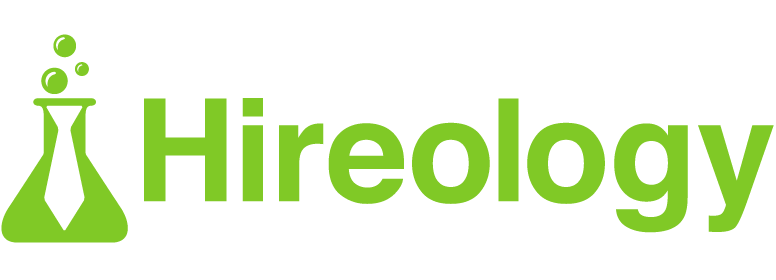The costs associated with hiring qualified employees add up quickly, especially in today’s competitive hiring market. As the labor market continues to get tighter, recruitment costs are only expected to increase.
Given the historically-low unemployment rate and countless opportunities available at job seekers’ fingertips – thanks to job boards, social media networking sites like LinkedIn and other resources – employers need to invest in their recruitment marketing and hiring efforts now more than ever before.
One challenge many employers face when it comes to recruiting and hiring top talent is overspending. Some employers might spend a significant amount of recruitment budget on a single job board posting, while others might keep a low-performing employee on board simply so they don’t have to open and fill the role again. Over time, the various costs pile up and can cause profitability to take a hit.
Does your team have a full understanding of all the costs associated with recruiting and hiring quality employees? If you’re like most employers, you might not be factoring some of the costs into your budget. We’ve outlined several recruitment and hiring costs – including some you might be overlooking.
Hard Costs Of Hiring
Your team likely has at least a general grasp on the hard costs associated with hiring top employees and have these costs outlined in your budget. Below are some examples of hard costs you might run into during the recruitment and hiring process.
Job Board Postings
Job boards are a key piece of any effective recruitment strategy. But some employers make the mistake of investing too much budget in one or two job boards in an effort to fill open roles quickly. And if you invest in job boards, you likely have limited visibility into which job boards drive the most quality applicants and eventual hires – which can lead to wasting money on certain channels.
To ensure your team isn’t overspending on job boards, you should have a diverse recruitment marketing strategy in place and continuously measure the success of each recruitment marketing channel. Hireology data found that a multichannel recruitment marketing strategy that includes job boards, a strong career site and programmatic advertising drives five times more quality applicants than job boards alone. And once you have a diverse recruitment marketing strategy in place, it’s important to determine which channels are driving results and which are not.
Hireology’s recruitment marketing Insight offer centralized visibility into sponsored job board performance, including total sponsored posts purchased, dollars spent, quality applicants sourced, and average cost per quality applicant. Users who view Insights regularly to monitor and optimize their recruitment strategy see nearly two times more quality applicants, review 14 percent more applicants, and hire five days faster.
Dedicated Career Site
Top employers have strong career sites that get qualified job seekers excited about their open roles. And while your team needs to set aside budget to build an effective career site, Hireology data found that career sites are seven times more cost-effective than job boards alone when it comes to driving quality candidates. This is because the most qualified candidates take the time to research career sites and learn more about job opportunities, rather than simply clicking “apply” on a job board posting.
To ensure your career site drives ROI for your business, make sure your site includes key elements that will encourage top talent to apply. These elements can include: an overview of your company’s employment brand, workplace culture, career progression and overall benefits to help top candidates see the opportunity your team offers. And to measure the effectiveness of your career site, you can tap into Hireology’s career site ROI Insight, which includes data about career site performance, including number of applicants, number of quality applicants and cost per quality applicant.
Candidate Screening
Candidate screening and verification are critical steps in the hiring process to ensure you’re hiring trusted employees who won’t be a liability for your business. As part of your overall recruitment and hiring budget, you should make sure to set aside funds for such screening and verification steps as prescreen surveys, skills tests, reference and background checks.
By partnering with a recruitment CRM platform like Hireology, you can tap into integrated screening and verification solutions, enabling you to automate many of these steps and centralize all data throughout the hiring process in one platform. Including verification as part of your hiring process allows you to make more informed recruiting decisions and get ahead of potential turnover with deeper insight into who your most qualified candidates are.
Salary and Benefits
Costs related to salary and benefits are a given when hiring any new employee. Depending on the role and experience level, these costs can vary greatly. Payroll and related costs can make up about 50 percent of any given employer’s total budget, so these costs are typically included in annual and other long-term budgeting plans well in advance.
Soft Costs of Hiring
The soft costs of recruiting and hiring top talent are the expenses that are often overlooked, as they’re not as tangible and can’t be directly listed as a line item in your budget. See an overview of several soft costs your team might not have thought about – and tips to reduce these costs and drive profitability for your business.
Lost Productivity Due to Open Roles
Hireology data found that for each day a role is open, the average employer loses $1,000 per in gross profit. Put into perspective for each day there’s an empty service bay at a dealership, fewer cars are serviced in the fixed ops department. And for each day a home care agency has an open caregiver role, fewer clients are served, leading to lower profits for the business.
To reduce the costs associated with lost productivity and profitability due to open roles, your team needs to have a more efficient hiring process in place. You can speed up your overall time to hire by automating several steps in the hiring process. Steps that can be automated include: prescreening candidates, distributing skills tests, completing reference and background checks, and sending automated email reminders, among other steps.
Time Spent on Unqualified Candidates
All too often, HR and hiring managers spend too much time manually reviewing applicants who aren’t a fit for the company or a given open roles. And sometimes these unqualified applicants are also brought in for interviews, wasting more time and resources that could otherwise be spent on tasks to help grow the business.
One way to avoid spending time on unqualified applicants is with Hireology prescreen surveys. Once applications are submitted, your team can automatically send follow-up emails to each applicant thanking them for their interest and providing a link to the survey. Prescreen surveys consist of a series of true/false questions and only take candidates a few minutes to complete. Candidates who aren’t a fit based on the survey results will automatically be eliminated from the hiring process. This will save your team time and resources that would have otherwise been spent reviewing unqualified applicants.
Time to Productivity with New Hires
No new hire is 100 percent productive the moment they walk in the door. And as mentioned earlier in the post, for each day you have an open role, your team will lose an average of $1,000 in gross profitability – meaning you need to do everything possible to get new hires up to speed as soon as possible.
To get new employees contributing to the business sooner rather than later, a key step your team can take is implementing digital onboarding. No new employee wants to spend their entire first day or week in the HR office filling out paperwork. Digital onboarding enables new employees to kick off their day-to-day work right away, rather than focusing on required paperwork. And it saves your HR team from manually repeating the same onboarding tasks each time a new employee is hired.
Onboarding tasks that can be completed before the first day include: filling out direct deposit information for automated payroll, completing tax forms, filling out benefits paperwork and signing the employee handbook. When employees dive into your employee handbook before they even get started, they’ll get a chance to learn more about your company culture and core values, making them even more eager to start working for your team.
Another challenge with boosting new hire productivity is that sometimes, you might simply hire an employee who is not a fit for your team. While an effective hiring process can help you avoid this in most instances, the occasional bad hire is inevitable. If this is the case on your team, you’ll want to avoid investing in training and other resources for employees who won’t be a fit for the long-term – as the costs can add up. Instead, touch base with any employees who aren’t a fit sooner rather than later to see if they might be a better fit for a different team or to gracefully part ways.
The applicant-driven economy shows no signs of slowing down and as the talent gap continues to tighten, recruitment and hiring costs will only increase. By having a full understanding of all the costs associated with hiring your best team, you can better optimize your budget and ensure you’re attracting top talent while saving money. For more information on how Hireology can help you save time and money on your recruitment and hiring efforts, schedule a demo today.




